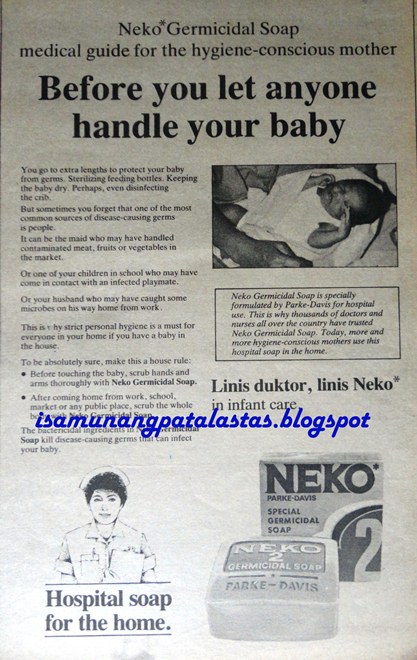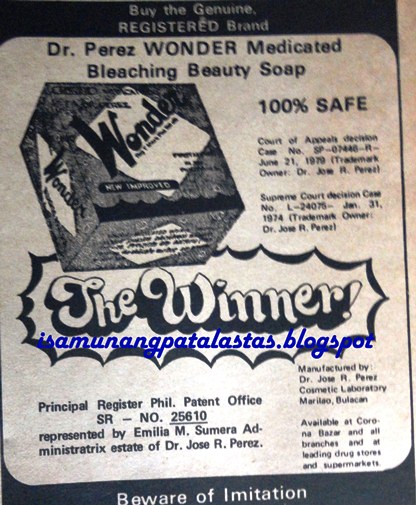 |
| SUNRISE COFFEE, in new Flavor-Rich Granules form, relaunch ad, 1988. |
In 1987, Nestlè Philippines developed a local coffee
product that was totally separate and different from their premiere flagship
brand, Nescafè Coffee. It was envisioned to be a price brand, to make coffee
more accessible to more Filipinos. Named as Nestlè SUNRISE, the coffee blend
came in the form of flavor-rich granules—so one need only a small amount to make
a rich cup of coffee.
Nestlè assigned the product to Ace-Saatchi & Saatchi,
and the agency went to work right away in crafting the communication strategy.
The brand name inspired the way Nestlé SUNRISE would be positioned—it would be pushed
as your first cup of morning coffee, for morning people who need a quick
picker-upper to warm up the start of their day.
Though Nestlé SUNRISE was meant to be a popular price
brand, care was taken by the agency to create a campaign hinged on beautiful Filipino
traditions. Former DOT secretary Ramon Jimenez Jr., was the lead creative
director who crafted the launch campaign, together with his team.
WATCH "SUNRISE COFFEE" LAUNCH AD HERE:
Source: View on the 3rd Jojo Bailon
It was he who came up with the theme: “Magandang Umaga sa
Iyo”, which is charmingly Filipino. It shows an aspect of typical Filipino
habits such as the warmth and vibrance of exchanging morning greetings among
people from all levels of socio-economic strata.
This campaign came alive in 3 memorable TV 30s commercials:
that were all designed to be morning situations: “Bride”, “Spoon”, and “Delivery”.
The “Bride”begins with a slow music that introduces
viewer to a Father character, deep in reverie, while sipping a cup of Nestlé
SUNRISE. Slowly, he sees a figure walk down the stairs—it is her daughter,
dressed in a wedding gown, and the soon-to-be wed bridge greets his father
with “Hi, Papa”. Very quickly, the
misty-eyed Father sees his daughter as a young girl, then is jolted back to the
present time. The Father escorts her Daughter out, ready to give her away.
“Homecoming”, the second version shows a middle-aged
couple having coffee together. Their small talk turns to their Son—a PMA cadet
in Baguio-- whom the Mother misses. Little did they know that at that precise
moment, the Son arrives to surprise them with a short visit.
The third version, “Delivery”, shows a couple having an intimate
coffee moment together, shot at close range. The Woman drops a spoon, and as
the Man bends down to pick it up, he sees someone wearing white shoes entering
the room. It is then revealed, as the camera pulls out, that the Couple are a
Husband and Wife in a hospital room, and the white shoe-shod figure is actually
a Nurse bringing in their newly-delivered Baby Girl (as foretold by the dropping of a
spoon). All the the commercials end with the last strains of the jingle--“Maganda umaga sa inyong lahat!”, a
pleasant good morning to all.
WATCH SUNRISE New Flavor Rich Granules" 1988 TVC HERE
with Angelique Lazo
(Credits: The CompanY Singers, posted Sep. 10, 2017)
At the 1987 Philippine Advertising Congress in Baguio
City, all three Nestle SUNRISE commercials were recognized, winning Individual Golds at the
Araw Awards. The Radio ad—which actually was a full song entitle, “Magandang Umaga”, won a Bronze Award.
MAGANDANG UMAGA SA IYO
Gising
na, sa tulog na mahimbing
Lumiliwanag
ang dilim,
Pati
na ang paningin
Nababanaag
mo,
Sa
dakong silangan
Ang
araw ay sumisilip,
Bumabati,
dumudungaw
Magandang
umaga sa iyo..
Magandang
umaga sa iyo.
Magandang
umaga sa iyo..at sa iyo at sa iyo..
Magandang
umaga..magandang umaga..
...sa inyong lahat!
CREDITS
ADVERTISER: Nestle Phiilppines
CLIENTS: Levi
Castillo, Ed Trivino
AGENCY: Ace-Saatchi
& SaatchiAdvertising, Inc.
CREATIVE DIRECTOR: Ramon
Jimenez Jr.
ART DIRECTOR: Kits
Yamsuan / COPYWRITER: Alex R. Castro
ACCOUNT MANAGEMENT: Sandra C. Puno
ACCOUNT EXECUTIVE: Richelle Mendoza
ACCOUNT MANAGEMENT: Sandra C. Puno
ACCOUNT EXECUTIVE: Richelle Mendoza
TVC PRODUCER: Paul
Suarez
CASTER: Mario
Sarmiento
PRODUCTION HOUSE: Image Films
DIRECTOR: Neil MacDonald
COMPOSER: Charo
Unite, Ramon Jimenez Jr.,Alex R. Castro
RADIO JINGLE
SINGER: Rene Martinez
JINGLE PRODUCTION
HOUSE: Empire Studio
SOURCES:
Sunrise Coffee TVC ith Angelique Lazo; https://www.youtube.com/watch?v=wq2iuGIomWM
published by The CompanY Singers, published on Sep. 10, 2017.






























